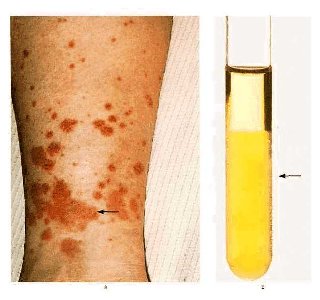 This is likely to be my final blog of the academic term. It has been a great 'year in medicine'. I hope those of you who read this have gotten something out of it. It will be likely be resumed by the incoming chief resident(s) @ Mount Sinai and/or TGH in July. I will be continuing to blog about other cases as I progress through my Infectious Diseases fellowship. For anyone who cares to read, you will find that blog starting here in July.
This is likely to be my final blog of the academic term. It has been a great 'year in medicine'. I hope those of you who read this have gotten something out of it. It will be likely be resumed by the incoming chief resident(s) @ Mount Sinai and/or TGH in July. I will be continuing to blog about other cases as I progress through my Infectious Diseases fellowship. For anyone who cares to read, you will find that blog starting here in July.Today we presented a challenging case -- where Occam's Razor again met head to head with Hickam's dictum.
The discussant began by talking about the various rheumatoid manifestations in the lung.
We then honed in on interstitial lung disease (previous blog on IPF here), and discussed the phenomenon of acute exacerbation of ILD (other review on non-IPF related AE-ILD here) -- a relatively new concept in respirology.
We also talked about the possibility -- and confirmation -- of pulmonary embolism. Noting of course that PE would not explain the diffuse ground glass opacities.
We discussed the possibility of a superimposed community acquired pneumonia, or TNF-alpha associated granulomatous infection and the need for treatment of same.







